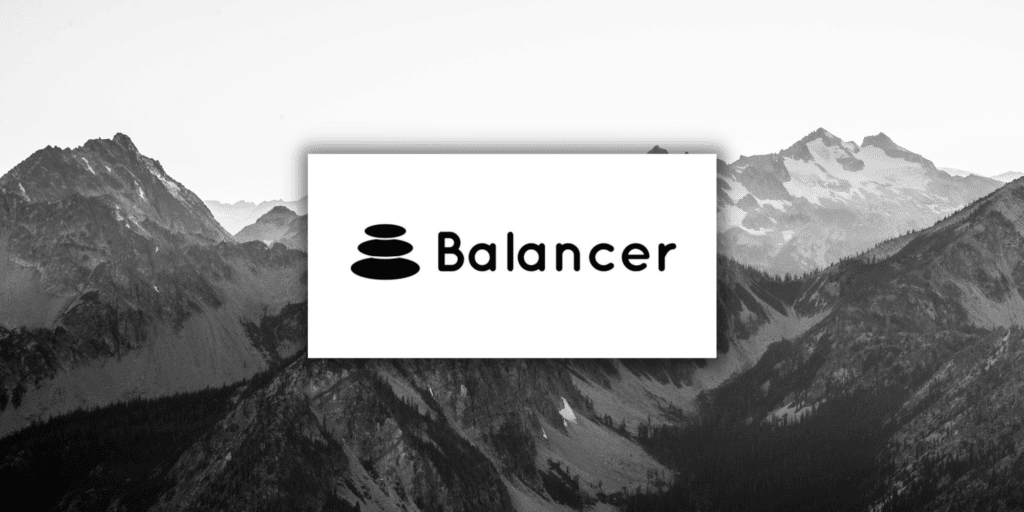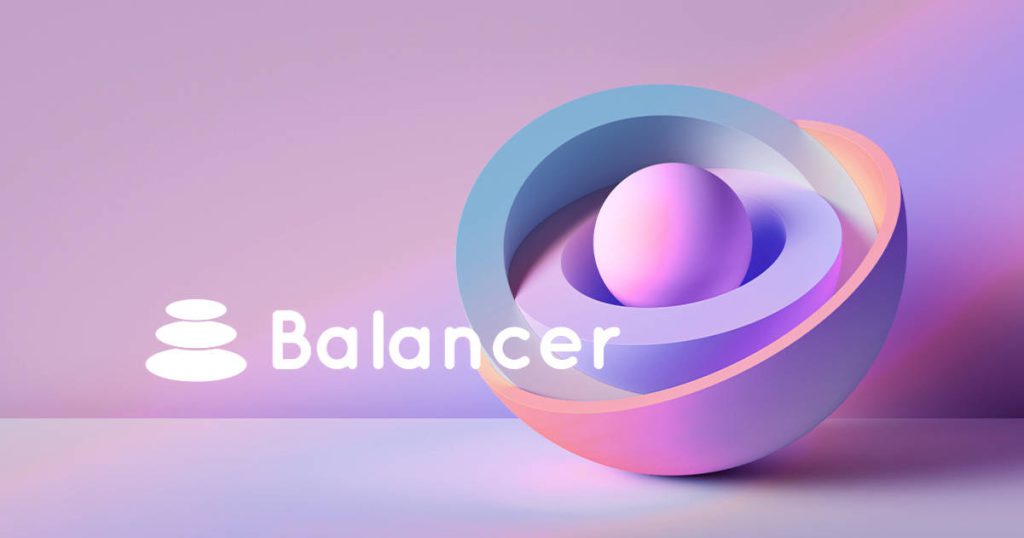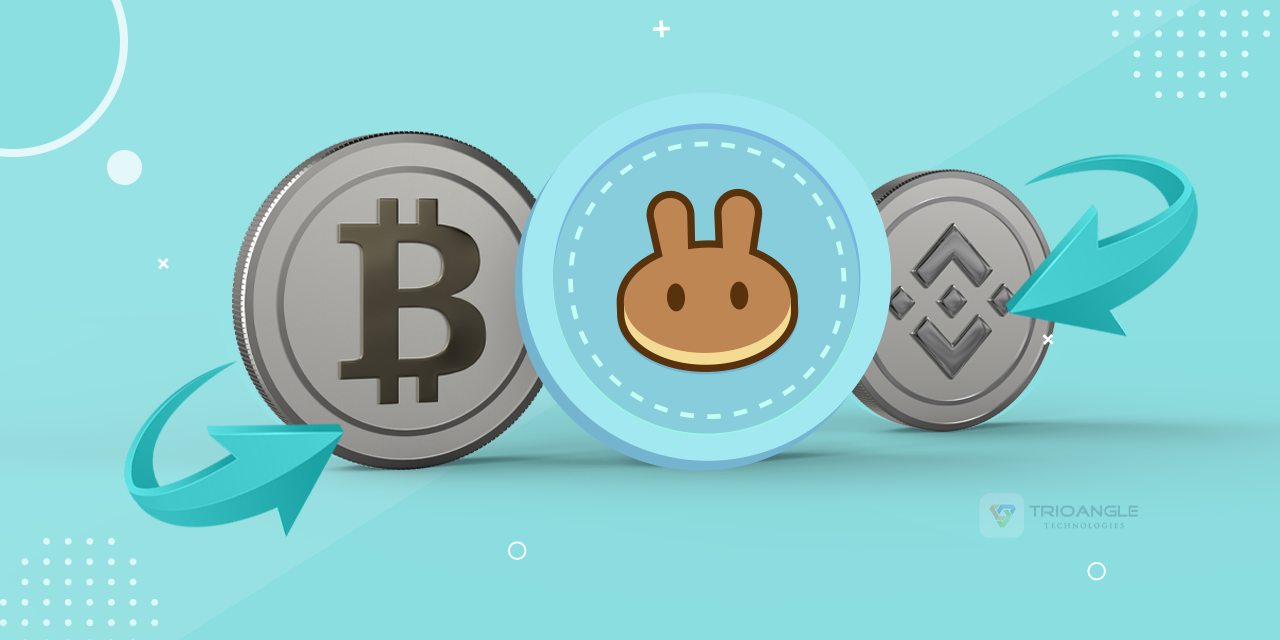Understanding Balancer: A Revolutionary Automated Market Maker in DeFi
Introduction to Decentralized Finance (DeFi)
Decentralized finance, commonly referred to as DeFi, is transforming the financial landscape by eliminating intermediaries and decentralizing control over economic transactions. It utilizes blockchain technology to offer open, permissionless, and interconnectable financial services. From lending and borrowing to trading and earning interest, DeFi applications are changing how individuals interact with financial instruments. At the core of this innovation is a subset known as Automated Market Makers (AMMs), which have revolutionized how tokens are traded on decentralized exchanges. Among these AMMs, Balancer stands out as a leading protocol due to its unique approach and functionalities.
What is Balancer?
Balancer is an automated portfolio manager and trading platform that distinguishes itself by allowing users to create liquidity pools with multiple tokens in varying weights. This flexibility marks a significant departure from traditional single-asset pools found in earlier DeFi protocols. Founded by Fernando Martinelli and Mike McDonald, Balancer started as a spin-off of the Brazilian software company, BlockScience, and quickly gained attention for its innovative take on liquidity provision.
Fundamentally, Balancer operates by using mathematical formulas to facilitate trading without relying on order books, which are characteristic of traditional exchanges. This mechanism not only ensures constant liquidity but also offers new opportunities for passive income through liquidity provision. Liquidity providers contribute to pools and earn trading fees, all while retaining exposure to multiple assets in a single pool.
How Does Balancer Work?
At its core, Balancer's design is a multi-token generalized AMM that mirrors an index fund, offering users automated portfolio management. Balancer pools are smart contracts that define the proportions of each token, which can be adjusted depending on the user's strategy. For instance, a user can create a pool with 50% ETH, 30% DAI, and 20% LINK if desired.
The Balancer ecosystem operates through several key components:
1. **Liquidity Pools* These are the foundation of Balancer. Pools consist of up to eight different cryptocurrencies, and their values are kept in balance as traders buy or sell tokens through them. As trades occur, the prices of the tokens in the pool adjust according to predefined mathematical formulas to maintain the weighted average.
2. **Smart Pools* These are dynamic pools that allow for adjustable parameters such as fees, token weights, and whitelisting. This flexibility makes them attractive for projects in need of unique liquidity solutions.
3. **Balancer Token (BAL)* This native token is crucial for governance decisions within the Balancer ecosystem. BAL holders propose and vote on changes such as protocol upgrades and fee structures, thus decentralizing the control and future direction of the platform.
4. **Stable Pools* An upgrade to the traditional pool system, stable pools are designed to minimize slippage when trading between stablecoins or pegged tokens. This innovation caters especially to traders looking for low-volatility trading pairs.
Advantages of Using Balancer
Balancer offers several advantages that help it stand out in the highly competitive DeFi space:
- **Flexibility in Pool Design* Unlike traditional AMM platforms that limit pools to two tokens, Balancer allows up to eight tokens per pool, giving liquidity providers the ability to diversify and tailor their investments to match specific risk appetites and market views.
- **Optimized for Capital Efficiency* Balancer’s pools operate with flexible weightings and fee structures enabling higher capital efficiency compared to fixed-weight systems. Providers can capture trading fees and yield farming rewards while maintaining exposure to a diversified portfolio.
- **Decentralized Governance* Through the BAL token, users participate in governance decisions, making Balancer a truly community-driven project. This fosters transparency and aligns the interests of the ecosystem with its users.
- **Reduced Gas Fees* The platform continually improves to reduce transaction costs. Integrations such as Layer 2 solutions contribute to making trading affordable for all participants in the ecosystem.
Real-World Applications and Case Studies
Balancer has been utilized by numerous projects and individuals to achieve a variety of financial objectives. For example, startups can create liquidity pools tailored to their specific requirements, such as fundraising or token distribution events. Meanwhile, individual traders and investors use Balancer to hedge against volatility and earn passive income through fees generated from pool activities.
A noteworthy example is how asset managers utilize Balancer pools to mimic portfolio rebalancing. Instead of conducting periodic trades to maintain target asset allocations, Balancer's automatic balancing mechanism ensures portfolios adjust dynamically according to market conditions.
Conclusion
Balancer represents a significant advancement in the DeFi landscape, offering unparalleled customization in liquidity provision and portfolio management. Its multi-token pools, dynamic fee structures, and governance model provide users with a powerful toolkit for navigating decentralized finance. As DeFi continues to grow and integrate into mainstream finance, Balancer's role as a versatile and user-centric AMM is poised to expand, making it a valuable player in the journey toward a fully decentralized financial future.
The Mechanics of Balancer Pools
Understanding how Balancer pools function is essential for appreciating the innovative power this protocol brings to decentralized finance. Unlike traditional financial instruments, Balancer’s pools require no centralized authority to maintain balance or liquidity; instead, mathematical algorithms take charge, allowing users to benefit from an automated experience.
Every transaction within a Balancer pool involves the adjustment of token weights to ensure that the predefined proportions are maintained. This automatic rebalancing occurs without user intervention. For instance, if there’s an excessive purchase of one token within a pool, its price will increase due to demand, making it more expensive relative to other tokens in the pool, thus encouraging sellers to bring the pool back into balance. This is reminiscent of the buy-low, sell-high strategy but executed autonomously.
Smart Pools and Their Unique Capabilities
One of Balancer’s standout features is its Smart Pools, which empower users to create customized liquidity pools with adjustable parameters. These dynamic pools let users or developers impose bespoke rules, automate portfolio adjustments, and even charge varying fees based on market conditions or other variables.
Smart Pools can function similarly to automated asset managers, adjusting the pool composition based on predefined criteria like market movements or external data oracles. This flexibility extends the Balancer platform into areas like algorithmic trading strategies and controlled exposure to specific market sectors, offering significant appeal to institutional and retail investors alike.
In addition, projects in the DeFi ecosystem can leverage Smart Pools to conduct Initial DEX Offerings (IDOs) or liquidity mining programs tailored to their needs. By adjusting entry and exit fees or implementing whitelists, these projects ensure they maximize engagement and investor loyalty while maintaining optimal liquidity levels.
Balancer in the Broader DeFi Ecosystem
Balancer’s flexible and user-centric model has positioned it as a critical infrastructure player in the burgeoning DeFi landscape. As decentralized finance grows, with users increasingly seeking alternative financial services outside traditional banking systems, the cooperative and interoperable nature of protocols like Balancer becomes vital.
The integration of Balancer into other DeFi projects showcases the protocol's versatility. It has found synergies with lending platforms such as Aave and Compound, where users can simultaneously earn interest on assets deposited in these platforms while providing liquidity on Balancer. Furthermore, synthetics platforms and derivatives projects leverage Balancer’s rebalancing capabilities to create innovative financial products that appeal to sophisticated investors.
Balancer's compatibility and potential for cross-protocol engagements extend to yield farming strategies, which have become a mainstay for DeFi participants seeking higher returns on their holdings. Through strategic collaborations, Balancer enhances liquidity opportunities, allowing users to maximize yield by simultaneously earning trading fees and protocol-specific rewards.
The Governance Model and Community Participation
At the heart of Balancer's decentralized ethos is its governance framework, designed to ensure that decision-making power resides with the community rather than a centralized entity. BAL token holders are encouraged to participate in shaping the future of the platform by proposing changes, voting on protocol upgrades, and defining fee structures.
This democratic approach ensures that all stakeholders have a vested interest in the protocol's success, fostering innovation and responsiveness to the market's evolving needs. Balancer’s governance model also invites transparency and accountability, as discussions and decisions are recorded on the blockchain, allowing any participant to audit and verify actions taken within the ecosystem.
Through decentralized governance, users contribute to enhancing Balancer’s resilience and adaptability, ensuring the protocol remains at the cutting edge of technological and market developments. As DeFi continues to scale, this community-led approach is anticipated to play an increasingly pivotal role.
Security and Risk Considerations
As with any DeFi protocol, security is paramount in ensuring user confidence and long-term viability. Balancer has undertaken extensive audits of its smart contracts to safeguard funds and prevent exploits, yet the open and evolving nature of DeFi means participants must remain vigilant.
Risks associated with smart contracts, market fluctuations, and external attacks are inherent. Therefore, Balancer encourages users to engage in best practices such as diversifying portfolios, using updated software wallets, and staying informed about protocol developments. The community also plays a crucial role in identifying vulnerabilities and suggesting improvements, further solidifying Balancer as a secure AMM choice.
It’s important for users to be aware of impermanent loss, a risk that arises when providing liquidity to AMMs. This occurs when price variations between pooled tokens result in a loss compared to simply holding the tokens separately. However, Balancer's multi-token pools and dynamic weighting can mitigate some of these concerns, providing an added layer of security and potential profit for liquidity providers.
Future Prospects for Balancer
As Balancer continues to innovate and expand its offerings, its future within the DeFi ecosystem looks promising. The ongoing development of Layer 2 solutions and collaborations with major blockchain projects aims to further reduce transaction costs and enhance scalability. These efforts are crucial for fostering increased adoption and more seamless user experiences.
Balancer is also exploring partnerships and integrations with traditional finance institutions looking to enter the DeFi space, illustrating the protocol's potential as a bridge between decentralized and conventional financial systems. By providing a flexible and robust platform, Balancer is well-positioned to accommodate this convergence and continue supporting diverse financial needs globally.
In conclusion, Balancer’s pioneering approach to automated market making and liquidity provision represents a substantial leap forward in DeFi. Its innovative structures and community-driven governance have not only set new standards for what AMMs can achieve but also promise to underpin the growth of a more equitable and accessible financial landscape. As we move forward, Balancer's adaptability and forward-thinking solutions will undoubtedly play a crucial role in defining the future of finance.
Exploring Balancer’s Impact on Portfolio Management
One of Balancer’s defining features is its ability to transform how users approach portfolio management within the blockchain ecosystem. Traditionally, portfolio rebalancing in finance involves manually adjusting asset allocations to align with specific investment goals. However, Balancer automates this process, offering a seamless and efficient alternative that allows users to maintain desired exposures without frequent manual intervention.
By employing mathematical algorithms, Balancer pools automatically rebalance upon each trade, ensuring that the predefined asset allocations remain intact. This autonomy allows investors to focus on strategic decision-making rather than the mechanics of rebalancing. Balancer’s unique capability has sparked interest among crypto investors and asset managers who appreciate the efficiency and cost-effectiveness it introduces to portfolio management.
Moreover, Balancer’s automated rebalancing is particularly advantageous in volatile markets where rapid changes in asset prices can quickly shift portfolio allocations. By ensuring that pools remain in the intended proportion, investors minimize transaction fees and capitalize on market dynamics with minimal disruption.
Balancer and the Evolution of Yield Farming
Yield farming, an attractive concept for many in the DeFi space, has seen significant evolution with platforms like Balancer. Yield farmers seek to maximize returns by strategically allocating liquidity across various protocols to capture the highest yield from trading fees, rewards, and other incentives.
Balancer’s flexible pool designs have been instrumental in this evolution. By enabling multi-token pools and allowing adjustable weights, it facilitates complex yield farming strategies that go beyond simple liquidity provision. Users can optimize their position to benefit from multiple income streams while simultaneously participating in protocol governance and decision-making.
Balancer’s integration with Layer 2 solutions further enhances these opportunities by reducing gas costs, making it more economical for yield farmers to move positions swiftly in response to market conditions. This increased efficiency provides a fertile ground for innovation, as developers and users continuously explore new strategies to leverage Balancer’s protocol for optimal returns.
Education and Accessibility: Making Balancer User-Friendly
While Balancer’s advanced features offer immense potential, they also come with a steep learning curve for newcomers to DeFi. Recognizing this, the Balancer community has made concerted efforts to improve accessibility and educational resources, ensuring that more users can confidently engage with the platform’s offerings.
Through comprehensive guides, tutorials, and community forums, users can gain insights into setting up pools, understanding yield farming strategies, and navigating the intricacies of Balancer’s ecosystem. By demystifying the platform’s functionality, these resources empower both novice and experienced users to maximize Balancer’s potential.
Additionally, Balancer’s user interface continues to evolve, focusing on enhancing user experience through intuitive design and functionality. As the DeFi ecosystem becomes more inclusive, these efforts are critical in attracting a diverse range of participants and supporting widespread engagement with decentralized finance principles.
Challenges and Opportunities Ahead
Despite Balancer’s successes, the protocol faces several challenges that could impact its growth and adoption. As with any DeFi platform, security remains a top concern, and Balancer is continually tasked with safeguarding against novel exploits and vulnerabilities. The protocol’s sustainability hinges on maintaining rigorous security measures and fostering an active community of developers and users to address potential risks.
Another challenge is the competitive landscape of DeFi, where new entrants and established protocols vie for market share. To remain at the forefront, Balancer must continue to innovate, both in terms of technology and user engagement. By exploring new partnerships, enhancing cross-chain compatibility, and developing unique financial products, Balancer can consolidate its position as a market leader.
On the opportunity side, the rapid growth of tokenized assets and increasing interest from institutional investors present significant potential for Balancer’s expansion. As traditional finance engages with blockchain technology, Balancer’s robust infrastructure could serve as a gateway for institutions looking to explore decentralized asset management.
Moreover, the evolution of regulatory landscapes presents both challenges and opportunities. While regulation could impose constraints, it also offers a pathway to legitimacy and broader adoption, especially as DeFi seeks to integrate with global financial systems. Balancer’s commitment to transparency and user-centric governance may provide it with a strategic advantage in navigating these changes.
Final Thoughts
Balancer’s unique approach to automated market making and decentralized finance distinguishes it as a formidable player in the DeFi ecosystem. Through pioneering technology, community-driven governance, and commitment to innovation, Balancer not only elevates how liquidity and token management are conducted but also paves the way for a future where finance is truly decentralized and accessible to all.
As the landscape of digital finance continues to evolve, Balancer’s adaptable framework positions it well to harness emerging trends and opportunities. By embracing the ethos of decentralization and championing user empowerment, Balancer remains poised to influence how individuals and institutions engage with financial markets, driving the continued growth and development of decentralized finance worldwide.



/industry-wired/media/post_attachments/wp-content/uploads/2024/02/How-to-Farm-Tokens-on-Balancer-BAL-Liquidity-Pools-Rahul-1.jpg)









Comments